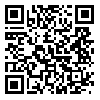BibTeX | RIS | EndNote | Medlars | ProCite | Reference Manager | RefWorks
Send citation to:
URL: http://hakim.tums.ac.ir/article-1-2261-en.html

 1, Maryam Hajizade_valokolaee2
1, Maryam Hajizade_valokolaee2 
 , Roya Farokhi3
, Roya Farokhi3 
 , Rahim Malekzadeh4
, Rahim Malekzadeh4 
 , Abazar Amoozadeh5
, Abazar Amoozadeh5 

2- Master of counselling in midwifery, Health system research, Health Research Institue, Babol University of Medical Sciences, Babol, Iran.
3- MSc in Epidemiology, Health system research, Health Research Institute, Babol University of Medical Sciences, Babol, I.R.Iran
4- MSc in Medical Services Management, Health system research, Health Research Institute, Babol University of Medical Sciences, Babol, I.R.Iran.
5- MSc in Mathematics, Health system research, Health Research Institute, Babol University of Medical Sciences, Babol, I.R.Iran
Introduction: The present study was conducted with aim of investigating the trend of animal bites and related demographic factors in Babol city between 2018 and 2023
Methods: This cross-sectional study is based on the collected data of animal bite victims, which was obtained by a head count method from the recorded reports of the Babol Health Center between spring of 2018 and winter of 2023. The variables examined in this study include demographic variables, animal characteristics, time patterns of animal bites, and some clinical patterns such as health care after animal bites and receiving prophylaxis after exposure. SPSS software version 23 was used for data analysis.
Results: The results show that the highest percentage of animal bites during the 5 years of is 7544 (74.89%) in males. The ratio of male to female victims is 2.98 times. The high percentage of animal bites was dogs and then cats with 8069 (81%) and 1232 (12.23%) respectively. The percentage of animal bites in unemployed people increased 2.35 times during 5 years and 5521 (54.8%) of people had non-office jobs. Also, over time, there has been an upward trend in the number of victims with owned animals, and the ratio of owned victims to stray animals is 2.17 times.
Conclusion: Since the data indicates an increase in animal bites by dogs with owners and in the group of non-office jobs as well as children, housewives, there is a need for training and a structured monitoring program in cooperation with other organizations to properly control animal bite injuries.
Received: 2024/07/17 | Accepted: 2023/06/19 | Published: 2023/06/19
| Rights and permissions | |
 |
This work is licensed under a Creative Commons Attribution-NonCommercial 4.0 International License. |
